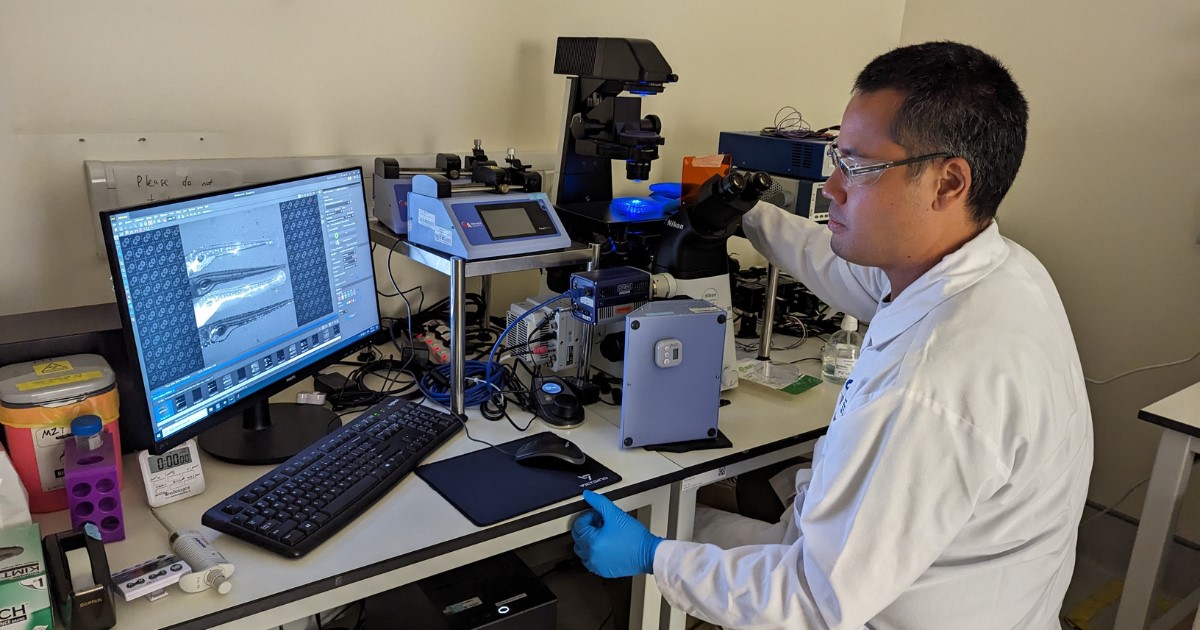FACES OF A*STAR
Eliminating The Spread Of Infectious Diseases With Unconventional Models

With tuberculosis - the oldest known and deadliest infectious killer - still ravaging parts of the world, Dr Stefan Oehlers and his team from the Bacterial Pathogenesis Laboratory in A*STAR ID Labs are shedding light on the mycobacteria that cause it and devastating lung diseases, to find new ways to stop them.
Across the world, germs called mycobacteria are infecting people and leading to tuberculosis, leprosy, and non-tuberculous lung disease. At the Bacterial Pathogenesis Laboratory in A*STAR Infectious Diseases Labs (A*STAR ID Labs), led by Dr Stefan Oehlers, scientists are studying such bacterial infections to find out how and why they impair people’s immune responses to cause the diseases.
With this knowledge, researchers can develop therapies to better tackle the diseases and help overcome the rising issue of antibiotic resistance in mycobacterial infections. The laboratory is focusing on mycobacteria, the causative agents of tuberculosis, and non-tuberculous mycobacterial (NTM) lung diseases.
Dr Oehlers, Principal Investigator at A*STAR ID Labs, notes that NTM infections, which are those that result in diseases other than tuberculosis and leprosy, are replacing tuberculosis as the main form of mycobacterial infection in the developed world.
“One example of our exciting research uses our unique zebrafish platform to investigate the immune, environmental and bacterial factors that make someone more likely to get infected,”
“Singapore is probably the best place in the world to do this globally important study because our hospitals see an amazingly diverse range of NTM strands that are not present in Europe and the United States.”
The Bacterial Pathogenesis Laboratory uses zebrafish for its mycobacterial infections research as the species’ larvae are transparent, making it easier to observe infections as they occur, among other advantages. “Our zebrafish models provide an intermediate infection platform that sits between cell culture and mouse infection experiments.”
“Where possible, we like to add a dimension of live imaging to track infection biology in real time and provide a unique window into infection biology.”
Dr Oehlers shares that his passion for his scientific field stems from his PhD days. “My PhD supervisor Professor Phil Crosier called me into his office back in 2010 and asked me to draw up a list of labs that excited me from my literature review.”

Dr Stefan Oehlers and his team specialise in using zebrafish models in medical research to understand diseases for better health outcomes.
"I was a pretty visual type of scientist spending most of my time counting fluorescent immune cells by eye, and it became pretty clear from my list that I enjoyed using live imaging to study the immune response to infection."
He completed his PhD at the University of Auckland in New Zealand in 2012, establishing zebrafish models of inflammatory bowel disease and performing small molecule screens to identify anti-inflammatory drugs in the Crosier lab.
After that, he trained in zebrafish models of tuberculosis and cryptococcal meningitis at the United States’ Duke University School of Medicine from 2012 to 2016, before forming an independent laboratory at the Centenary Institute located at Australia’s University of Sydney, in 2016. The latter combined all of his infection and immunity research interests.
He explains his move to A*STAR ID Labs in 2022 to head the Bacterial Pathogenesis Laboratory: "I was really excited for the opportunity to join A*STAR ID Labs at the start of 2022 almost immediately after it was established. We have a world-class mix of pathogen expertise on level five of Immunos, and the collaborative spirit is truly infectious."
Big things are on the horizon for his laboratory. "While I love being able to help other labs by answering unique questions with our zebrafish infection platform, 2024 will hopefully be the year that we start publishing papers with big impact."
The drive to tackle the scourge of infectious diseases motivates him every day. "There's a bit of a contrarian attitude required to work in infectious diseases. The goal of Silicon Valley big money science is to live forever, but those people forget that infectious diseases are still a real problem for the rest of the world."
"My most scientifically satisfying discoveries have come from taking a concept from a field like cancer and applying it to discover treatments for tuberculosis patients, the scientific version of Robin Hood."
With support from A*STAR, his laboratory is delving into the interaction between tuberculosis and ageing too, with the goal of working with others to set A*STAR up as the regional centre of excellence for infection and ageing interaction research.
He advises aspiring young scientists, "Success in research takes equal parts creativity to think something that has never been thought before, resilience to fail at most of the things you try, and the tenacity to finish the things that work."
Was this article helpful?
A*STAR celebrates International Women's Day

From groundbreaking discoveries to cutting-edge research, our researchers are empowering the next generation of female science, technology, engineering and mathematics (STEM) leaders.
Get inspired by our #WomeninSTEM




